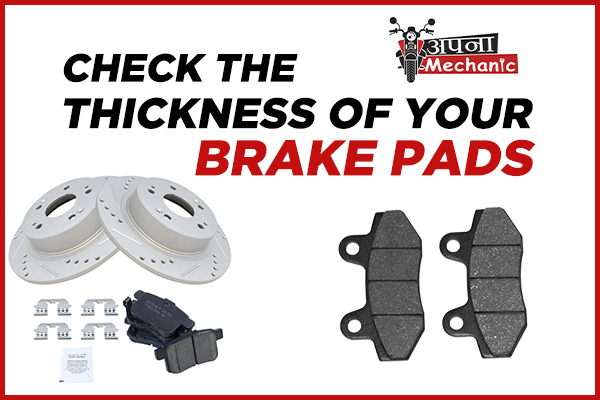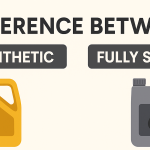Brake pads are the “wear and tear” elements of your vehicle’s braking system. Brake pads are subject to regular friction and therefore wear out naturally wear time. Even if you think you are the gentlest rider, your bike’s brake pads will wear out eventually. Worn-out brake pads expose the backing plate which if not replaced immediately can cause hazards to your as well as your passenger’s safety. Hence, bikers must keep checking the condition of their brake pads so that they can change them at the right time to avoid possible accidents in the future.
Before discussing the effective methods of checking the thickness of your brake pads, let us know more about brake pads and their various types.
The common types of brake pads include:
- Non-metallic: Non-metallic brake pads are composed of synthetic substances. They have shorter life spans with reduced risk of disc wear. They are also called organic brake pads.
- Semi metallic: These are composed of both synthetic and metal substances. These do not get worn out easily but cause wearing of brake discs.
- Fully metallic: these are usually used by race participants. They have been equipped to withstand high temperatures. The disadvantages of using fully metallic brake pads are that they are very hard on the discs as well as they work effectively only after they become very hot.
- Ceramic brake pads: these are made of ceramic material along with copper strands. It is the most expensive one. It offers quality performance irrespective of temperature. It’s a classy choice causing no dust to stick to the wheels while also providing a noiseless service.
How to the check thickness of brake pads?
- The easiest method of checking thickness is visual inspection.
Your brake pads are composed of two primary elements- metal back plates and friction pads. Friction pads are the parts really responsible for putting brakes. However, you don’t need a professional to tell you that your brake pads have worn out. All you have to do is check its condition yourself. Usually new brake pads come with a thickness of 10mm. It’s obvious that worn out pads have lesser thickness which in result mean less effectiveness. Worn out pads can lead to overheating of the brakes. Therefore, anything less than 3mm thick must be changed as soon as possible.
- If you experience an uneasy pedal feel, it’s time to get a new pair of brake pads.
If the friction pads of your brake have worn out completely, it will only have metal back plate left. The metal plate then gets pressed against the disc every time you hit the brakes. You can hear the sound of metal clanking on metal. Riders can also feel a certain vibration due to worn out brake pads whenever they apply the brakes.
- Unusual grinding noises mean worn out brake pads.
If you hear any unusual growling sounds or grinding noises or any sort of squeaking as you step foot on the pedal of your bike, then it’s a clear-cut indication that you probably then a near pair of brake pads. The squeaking sound comes from metal back plates touching the metal disc of your bike. If the thickness of the pads has reduced to 3mm they will likely produce a squeaking noise, urging you to change them. Worn-out brake pads will not generate enough friction required to stop the bike. Moreover, if the metal backing plates keep on grinding on the disc in case you neglect changing them, it can further damage the metal disc. Therefore, it’s vital to change or replace the braking pads as you start noticing loud squeaking noises.
- If you are pressing too hard on the brakes, it’s time to replace your brake pads.
If your bike has less braking power, it means that the brake pads are not working properly. Less power is caused either due to wearing out of the brake pads or if the brake pads have been contaminated with dirt or grease. Also, it’s important to know that contamination can happen for a number of reasons. For one, the brake fluid can get absorbed into the pad material. Or grease and cleaners might have stuck to the pads. Sure, you can clean dirty brake pads for improved performance, but it will never be as good as buying a new pair.
Summing up:
There are various types of brake pads available, each one designed to serve a certain purpose. Some are made for tracking, while others are best suited for street riders. Whatever your type is, it’s important to keep checking your braking pads’ health regularly as part of your routine inspection. Also, there are professional bike mechanics available online to get you the best servicing experience sitting at home. Apna mechanic can be your go to online bike servicing center. Our skilled mechanics will give you doorstep service, whether it’s for regular checking or repairing of tools.




































